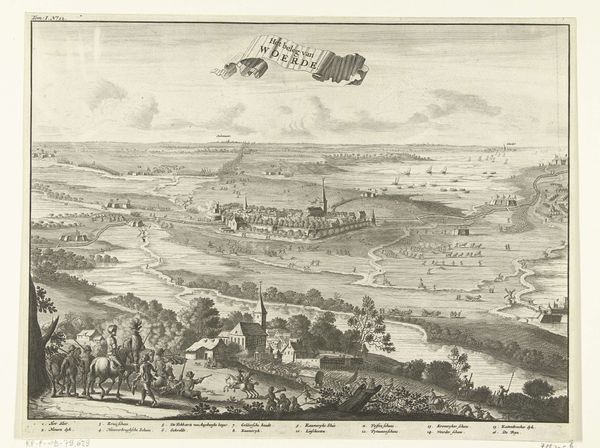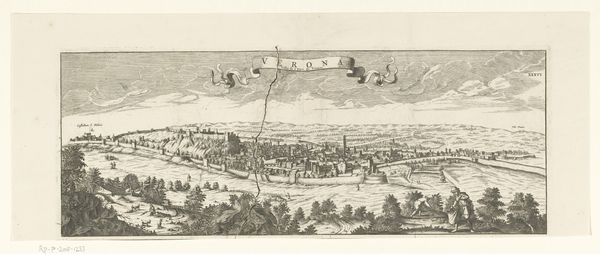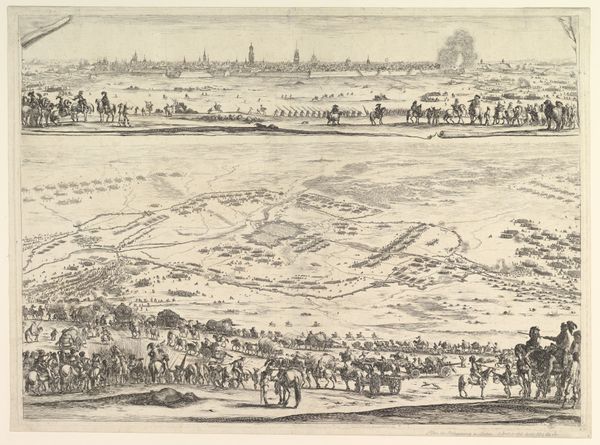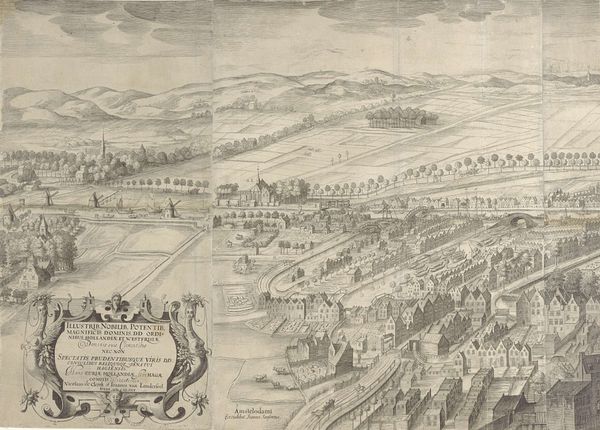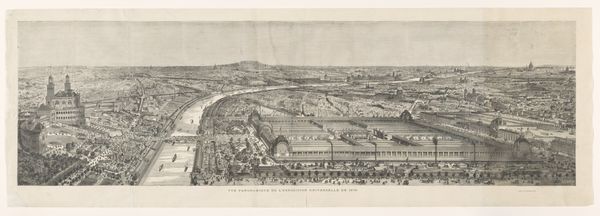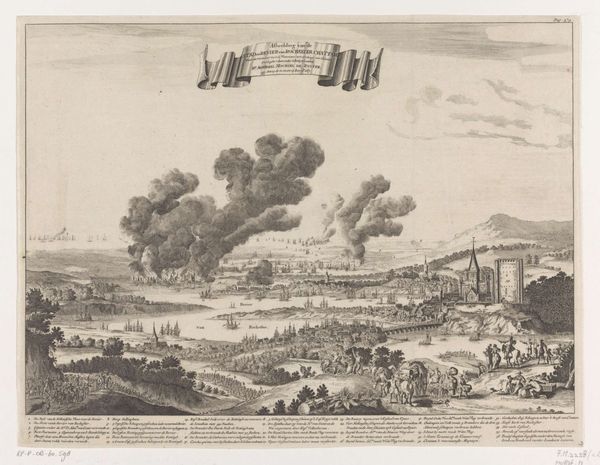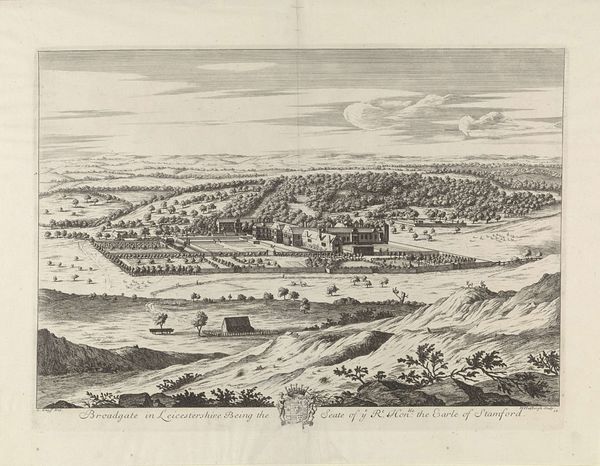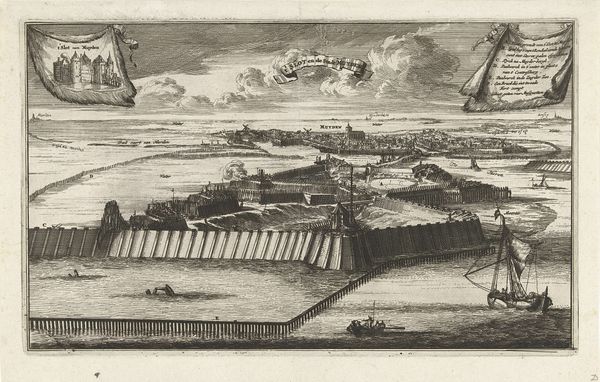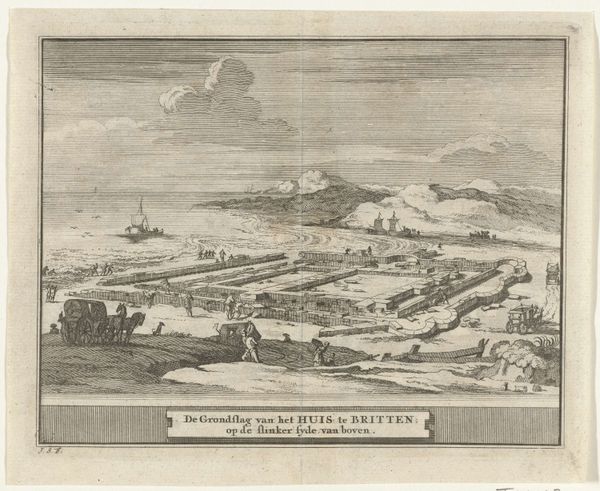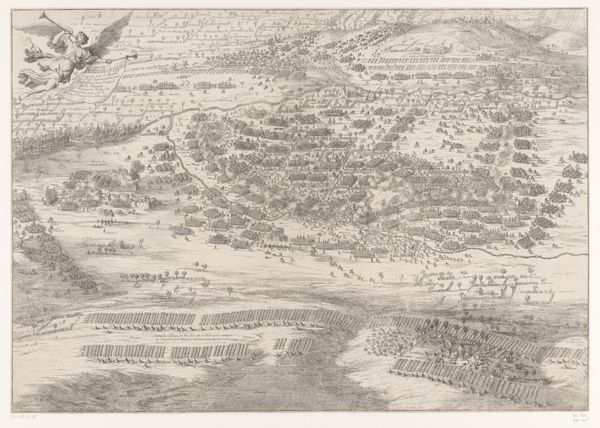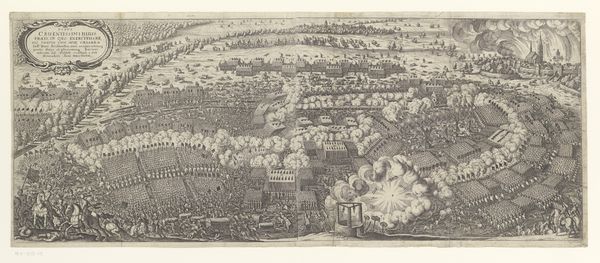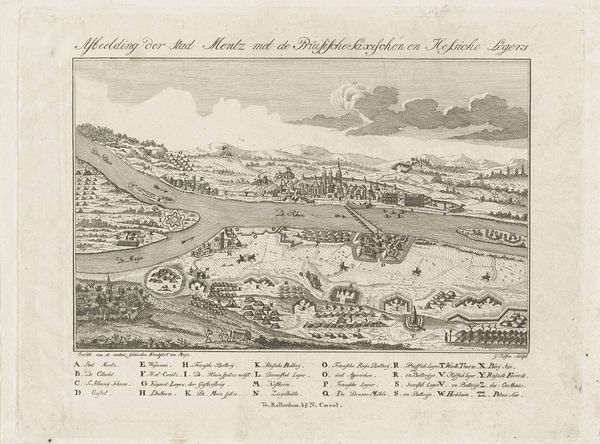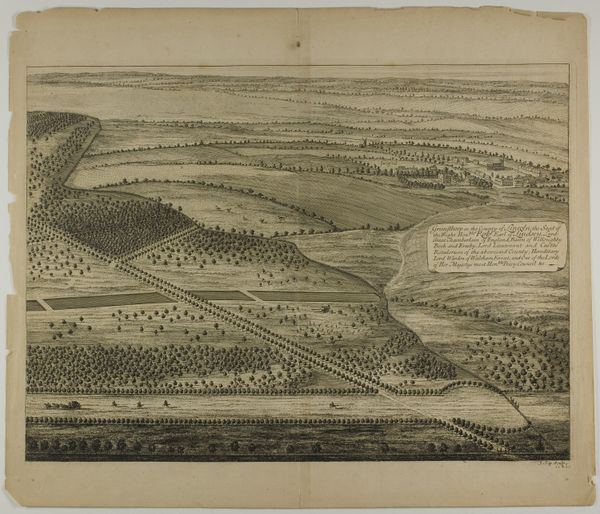
print, etching
#
baroque
# print
#
etching
#
old engraving style
#
landscape
#
etching
#
cityscape
Dimensions: height 268 mm, width 348 mm
Copyright: Rijks Museum: Open Domain
Editor: This print, "Beleg van Woerden, 1576," created by Coenraet Decker between 1701 and 1703, depicts a siege in delicate lines of etching. It’s interesting how calm it feels for such a turbulent event. What do you see in this piece beyond the immediate landscape? Curator: This print, created long after the actual siege, participates in constructing a particular historical narrative. Note the strategic placement of the Dutch soldiers and the focus on Woerden. This wasn't just a battle; it was a struggle for religious and political autonomy. The print serves as propaganda, solidifying a Dutch national identity in opposition to Spanish rule. Who is included in this visual representation, and who is omitted? Editor: So, the print isn't just showing history, it’s shaping a version of it. Does the baroque style influence how the narrative is framed? Curator: Absolutely. Baroque, even in printmaking, utilizes dramatic compositions to evoke an emotional response. The meticulous detail, while seemingly objective, emphasizes the strength and order of the Dutch forces. Where do your eyes focus, and how does that guide your interpretation? Think about the symbolism of the cityscape itself – the order it projects versus the chaos of war. Editor: I initially saw a pretty landscape, but now I notice how the orderly town is juxtaposed against the conflict raging around it. It makes me wonder whose perspective is prioritized in this representation of war. Curator: Exactly! By analyzing the print’s composition, the artist’s choices, and the historical context, we can understand the power dynamics at play and the narratives being constructed. So, is it merely a historical record? Or is it doing more work than that? Editor: Definitely more. I’ll never look at historical prints the same way. It is a powerful statement. Curator: Indeed, engaging with art this way is key. Thinking critically about how history, identity, and power intertwine helps us interpret not only the past but also the present.
Comments
No comments
Be the first to comment and join the conversation on the ultimate creative platform.
